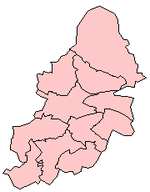Balsall Heath is an inner-city area of Birmingham, West Midlands, England. It has a diverse cultural mix of people and is the location of the Balti Triangle.

Moseley is a suburb of south Birmingham, England, three miles south of the city centre. The area is a popular cosmopolitan residential location and leisure destination, with a number of bars and restaurants. The area also has a number of boutiques and other independent retailers.

Birmingham City Council is the local government body responsible for the governance of the City of Birmingham in England, which has been a metropolitan district since 1974. It is the most populated local council in the United Kingdom with, following a reorganisation of boundaries in June 2004, 120 Birmingham City councillors representing over one million people, in 40 wards. This means that Birmingham is technically the largest city in the United Kingdom. The council headquarters are at the Council House in the city centre. The council is responsible for running nearly all local services, with the exception of those run by joint boards. The provision of certain services has in recent years been devolved to several council constituencies, which each have a constituency committee made up of councillors from that district.
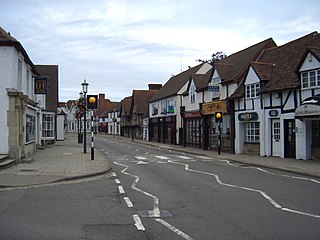
Knowle is a large village situated 3 miles (5 km) east-southeast of the town of Solihull, West Midlands, England. Knowle lies within the Arden area of the historic county boundaries of Warwickshire, and since 1974 it has been part of the Metropolitan Borough of Solihull within the West Midlands. It lies 2.5 miles from the Warwickshire border and has a population of around 11,000 residents.
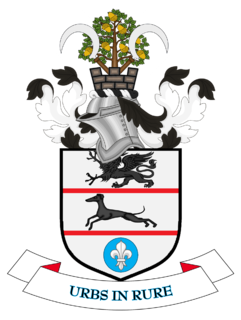
The Metropolitan Borough of Solihull is a metropolitan borough in West Midlands county, England. It is named after its largest town, Solihull, from which Solihull Metropolitan Borough Council is based. It is sometimes locally nicknamed "Solihullshire". For Eurostat purposes it is a NUTS 3 region and is one of seven boroughs or unitary districts that comprise the "West Midlands" NUTS 2 region. Much of the large residential population in the north of the borough centres on the communities of Castle Bromwich, Chelmsley Wood, Fordbridge, Kingshurst, Marston Green and Smith's Wood. In the south are the towns of Solihull and Shirley, and the large villages of Knowle, Dorridge, Meriden and Balsall Common.
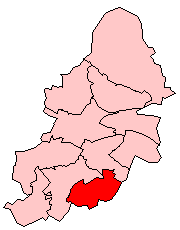
Hall Green is an area in southeast Birmingham, England, synonymous with the B28 postcode. It is also a council constituency, managed by its own district committee. Historically it lay within the county of Worcestershire.

Kings Norton, alternatively King's Norton, is an area of Birmingham, England. Historically in Worcestershire, it is also a Birmingham City Council ward within the Government of Birmingham, England. The district lies 6.5 miles south-southwest of Birmingham city centre and is within 1.5 miles of the north Worcestershire border.

Sutton Trinity is one of the 40 electoral wards in Birmingham, England. It is named after Holy Trinity Church, the town's parish church.

Longbridge is an area of Northfield, West Midlands. It is located near the border of Worcestershire in the south-west of Birmingham, England.
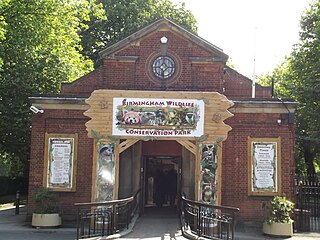
Birmingham Wildlife Conservation Park, formerly Birmingham Nature Centre, and before that Birmingham Zoo, is a small zoo on the edge of Cannon Hill Park in Birmingham, England. It is owned and managed by Birmingham City Council.

The Birmingham Baths Committee was an organisation responsible for the provision and maintenance of public swimming and bathing facilities. Birmingham City Council funded, constructed and ran bathing facilities throughout the city. The movement to develop baths and wash houses in Britain had its impetus with the rapid urbanisation of the Industrial Revolution, which was felt acutely in Birmingham, one of England's powerhouses.

Moseley railway station in Moseley, Birmingham, England, operated from 1867 to 1941.
This article is intended to show a timeline of events in the History of Birmingham, England, with a particular focus on the events, people or places that are covered in Wikipedia articles.
The Camp Hill line is a railway line in Birmingham which lies between Kings Norton on the Cross-City Line and Birmingham New Street via Grand Junction on the main lines from Derby and Coventry.

Kings Heath railway station was a railway station in Kings Heath, Birmingham, England.

Hazelwell railway station was a railway station on the Camp Hill Line in Birmingham, England. It then became the home of Birmingham Model Railway Club from 1963 until 1980.

Brighton Road is a former railway station situated near Balsall Heath in the West Midlands, England.















